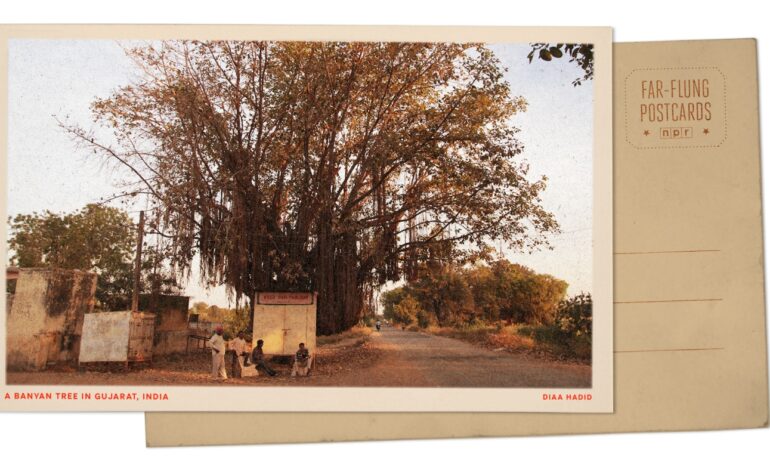Urgent Update: Gujarat’s Banyan Trees Serve as Life-Giving Hubs

New reports confirm that the iconic banyan trees of Gujarat, India, are not only places of rest but also vital centers for community prayer and daily life. Just outside Dingucha village, these sprawling trees provide shade and serve as gathering spots amid the sweltering late-afternoon heat.
As observers note, the banyan tree’s roots cascade down like ropes, often used by children for play. Meanwhile, in both Hindu and Muslim areas, oil lamps are placed among the tangled roots as a sign of reverence. Strips of cloth flutter from branches, symbolizing hopes and prayers for answered wishes.
Earlier today, on a typical afternoon, men were seen relaxing next to a stall selling paan, a local treat made from ground betel nut. The scene was picturesque, evoking the warmth of an old photograph while highlighting the stark contrast to the challenges faced by local women.
In a stark reminder of daily struggles, a stream of young women passed by, balancing heavy pots of water on their heads. This grueling task is often repeated multiple times a day, showcasing the resilience of the local community.
The banyan tree stands as a powerful symbol of life in Gujarat, embodying both the beauty and hardships of everyday existence. As these trees continue to provide shade and serve as communal spaces, they remain essential to the social fabric of the region.
Officials emphasize the cultural significance of these trees, which have become central to community life in both urban and rural settings across the country. As India navigates its modern challenges, these natural landmarks remind locals of their heritage and community ties.
As we continue to monitor the developments in Gujarat, the banyan trees are expected to remain focal points for both rest and reflection amid the ongoing challenges of daily life. Stay tuned for more updates and human interest stories from around the globe.






